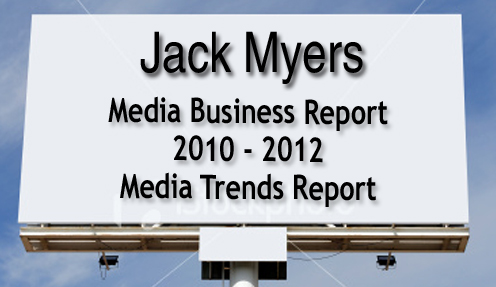TV Commercials vs. Online Video Advertising: Battle of Conflicting Business Models

PART 9: Major Trends Impacting Media, Agencies and Marketers 2010-2012
One of the most obvious yet least apparent trends in the media and advertising world today is the untapped YouTube marketplace and the ability of marketers to both create and distribute online video advertising outside of traditional media and agency channels. Among last week's Top 10 Viral Video Ad Campaigns, as reported by Visible Measures in Advertising Age, half of the creators were either in-house or undetermined. Only two were produced by established major advertising agencies (The Martin Agency for Geico, BBH for Axe). Three others were created by specialty agencies (The Viral Factory for Samsung, Buzzman for Tipp-Ex, Mad Media for DC Shoes). Marketers investing six figure budgets to produce 30" commercials for television and simply exporting them online are missing or choosing to ignore the realities of online video advertising. It is inherently a self-contained marketplace with its own independent creative zeitgeist. Using television commercials and highly polished and produced videos for paid pre-roll/post-roll and integrated positions in traditional video content does not capitalize on the under-explored territory of online video.
Marketers have discovered the value and importance of online video advertising, which Jack MyersMedia Business Reportprojects will increase an average of 68% annually to more than $4.5 billion in 2012, the fastest growing of any advertising sector. And while several sales firms and ad networks are serving the thousands of sites that are integrating video inventory into their businesses, the key driving force behind advertiser and agency adoption has been the opportunity to advertise in traditional network television programming via Hulu, iTunes, TV.com, Yahoo! and the networks' own websites.
Of the nearly 20 million monthly online video views (according to comScore), an estimated 80% are captured by YouTube, leaving only the other 20% to be split among the TV networks' own sites, Hulu, Yahoo, aol, Microsoft, Vevo, Babelgum, Blip.tv, NextNewNetworks, Revision3 and many others who are investing hundreds of millions in technology and content production costs to attract advertising and sponsorship support for their professionally-produced video content. In their efforts to be relevant, many advertisers are turning away from traditional paid advertising models and launching video advertising campaigns designed to generate viral distribution via YouTube, Facebook, Twitter and other social media.
You are receiving this e-mail as a corporate subscriber to Jack Myers Media Business Report. Re-distribution in any form, except among approved individuals within your company, is prohibited. As a subscriber you have full access to all archives and reports at www.jackmyers.com. If you require your ID and password, contact maryann@jackmyers.com
Their challenge is a lack of developed creative and business models designed specifically to serve the social video model. Media industry veteran Walter Sabo, founder of Hitviews believes marketers must forge an "authentic, credible relationship" with online video viewers and that "products and messages must be within the context of entertaining videos that viewers seek out. This is NOT viral marketing," he stresses. "The online video medium has created its own stars and celebrities, many of whom have millions of followers who view every video their favorite stars release, just as movie stars have fans who watch every movie they're in." Hitviews facilitates endorsement relationships between marketers and these indigenous online video stars, who actually produce and distribute videos featuring the marketers' products and services, pre-approved by the marketers.
Sabo explains there are significant challenges to advertisers who attempt to export their traditional ways of developing ad campaigns to the online video market. Since the webstars produce the videos and integrate the marketer's product and message into their own unique video format and style, the creative agencies lose their biggest profit centers – creative development and commercial production. The webstars also control video distribution via YouTube and other sites, so there are no traditional media costs. While it's an incredibly cost efficient advertising model, says Sabo, it does not fit neatly within any of the traditional profit-centric agency models.
Also confronting the traditional business models is the growing trend to reduce the paid traditional media exposure for TV commercials and depend on viral distribution to increase reach and maintain frequency. The #1 global viral video last week as reported by The Wall is the ten-minute Ken Block video Gymkhana THREE produced for DC Shoes with additional funding from multiple sponsors. At number three is the new Geico "Piggy" commercial, which is poised to generate more views from unpaid online exposure than it will from Geico's paid TV spots. The Evian "Babies" commercial has generated more than 80 million online views. But for every Evian there are many advertisers who are "posting" viral videos that fall embarrassingly flat. While Isaiah Mustafa's virally distributed Old Spice campaign captured creative lightening in a bottle, it possibly did more for the actor's career than it did for increasing sales of the men's fragrance.
Hitviews has signed and represents more than 50 online video "webstars" and counts one of them, webstar Caitlin Hill (TheHill88) as the company's Chief Creative Officer. Hitviews' webstars have developed and distributed more than 100 videos for companies such as Virgin Mobile, MTV Networks, Microsoft, CBS, Panasonic, ABC Family, Logitech and The Weinstein Company. Sabo claims their videos consistently generate more views, often by millions, than professionally produced online "viral" campaigns. Sabo believes marketers and agencies will evolve their strategies to recognize the importance of tapping into online-originated stars and their videos for celebrity endorsement and product placement.


